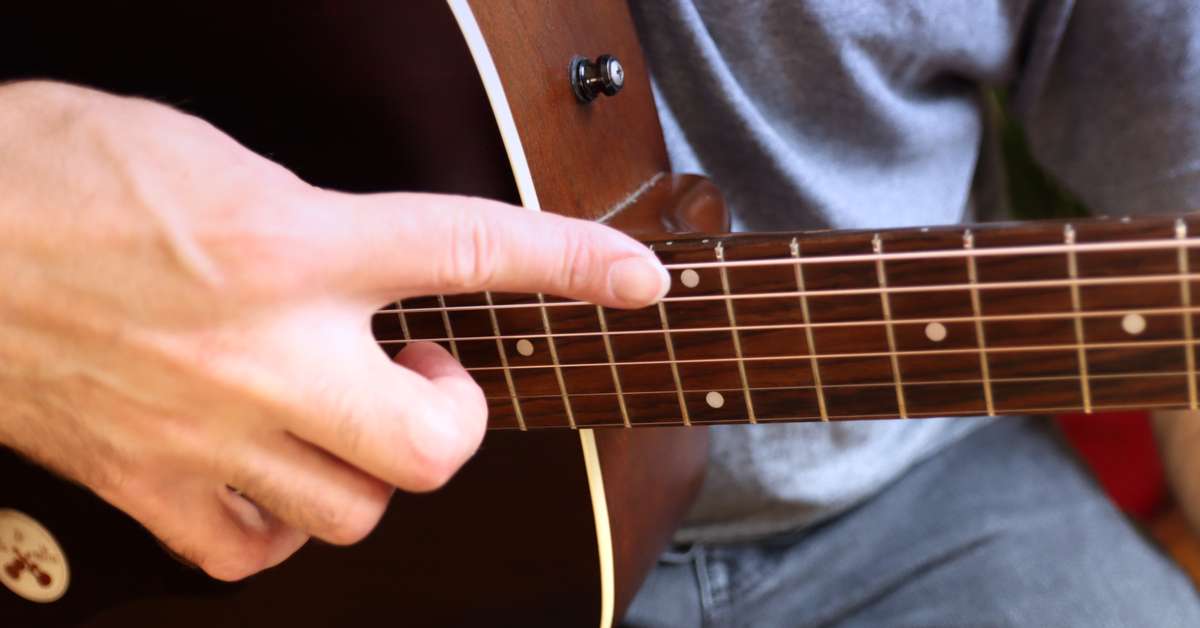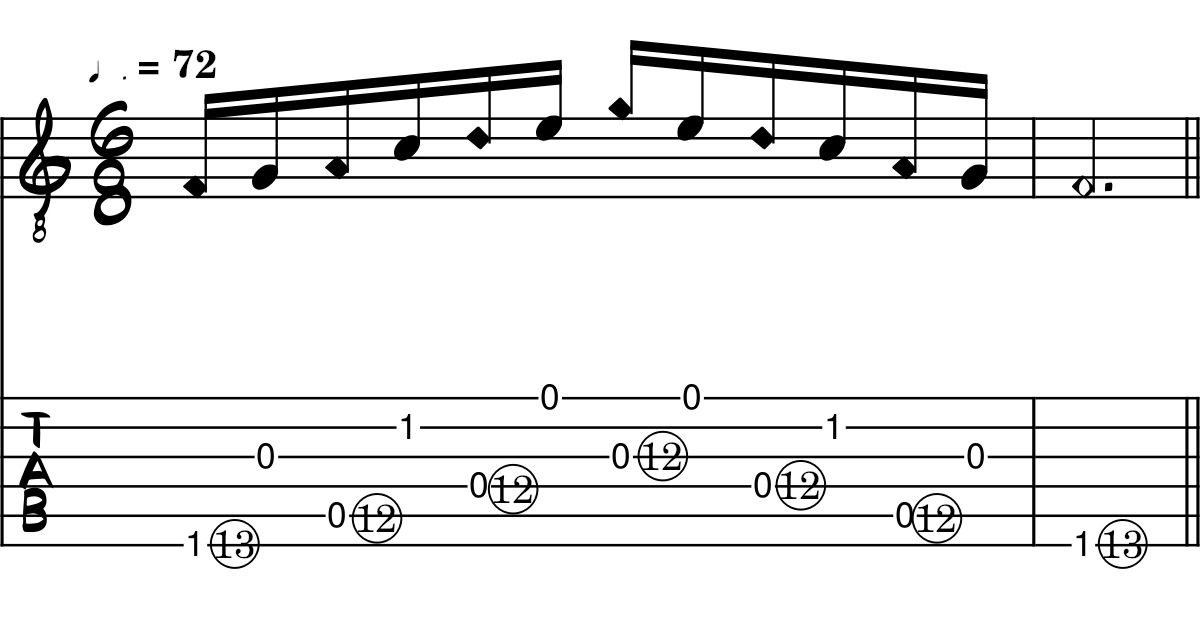Ready to learn one of the most beautiful effects in guitar? Here's the best way to add some sparkle to your playing!
One of the most impressive effects that you can do on fingerstyle guitar is cascading harmonics
When played at a fast speed, cascading harmonics can create a mesmerizing shower of harp-like tones on your guitar.
When you do cascading harmonics, your ear is tricked into hearing all the notes as harmonics, creating an illusion of cascading, flowing tones that will leave your audience spellbound.
Let's learn this innovative technique used by the greatest fingerstyle guitarists of our time, including Howard Morgen, Chet Atkins, and Tommy Emmanuel.
How Do Cascading Harmonics Work?
Cascading harmonics is the magic of rapidly alternating harmonics with non-harmonic notes in the same octave.
For example, let's say you play the note D3, which is the fourth string open, and then you play the sixth string open, which is the note E2. Because these two notes aren't in the same octave, the ear perceives them as being fundamentally different.
But when you play a harmonic at the 12th fret, you're sounding the note E that's an octave higher than the open E string.
This note E3 is the same pitch as the E note you can play on the fourth string at the second fret, which is a whole step above the open D note on the fourth string (D3).
Because harmonics have a pure, bell-like tone that rings out like an open string, you can create a cool illusion by playing the open string D note and quickly alternating with the harmonic E at the 12th fret.
Since the two notes are so close together in pitch, your brain has a hard time distinguishing the timbre between them, and it can sound like both notes are ringing out as either open strings or harmonics.
Cascading harmonics takes this effect and uses it over a whole chord, across all the strings, instead of just alternating between two notes.
You will learn more about intervals such as octaves in my online course, Play Fingerstyle Guitar Now!
How To Play Cascading Harmonics
Before you dive in, make sure you've got your right-hand harmonic technique down pat. You should be able to play natural harmonics fluently just with the plucking hand.
Now, start by plucking the E string over the 12th fret, using your thumb to sound the string and your index finger to lightly touch the string at the harmonic node. This will produce the note E3.
You can also pluck the string with the ring finger, though I prefer the thumb.

Then, try playing a regular D note on the open fourth string with your ring finger, followed by a harmonic E note on the sixth string, using your index finger to touch the string at the twelfth fret and your thumb to sound the string.
Since the sound of the harmonic E is in the same octave as the D on the fourth string, it helps create that mesmerizing, cascading effect.
How To Notate Cascading Harmonics
Notating cascading harmonics can be a challenge, especially when only using standard notation.
Traditionally when notating harmonics, the fret where the harmonic node is located is listed in roman numerals, and the string number listed in Arabic numerals with a circle around it.
My preference is to first notate in the tablature the fret of the stopped note with the fret location of the harmonic node right next to it with a circle.
In the example above, the first note is F3, sounded by placing a finger on the sixth string, first fret and plucking the node located at the 13th fret.
Harmonic nodes can also be notated with chevrons, but I am unable to do this with Musescore unfortunately.
Let's now find out exactly how I calculated the location of the nodes for the above example.
How To Play Cascading Harmonics With Chords
To play cascading harmonics with chords, you'll want to combine regular plucked notes with notes that are the second harmonic. You can find this harmonic exactly 12 frets higher than the fundamental note (the open string note).
You can technically also use the node which is an octave and a fifth above the open string, but it's pretty rare.
If your fundamental is an open string, like the third string which sounds G3, your node to sound the second harmonic is located at the 12th fret. This produces the harmonic which is the note that sounds an octave above the open G string, or G4.
But when you're playing harmonics with chords or fretted notes, you need to shift the node's position. Instead of counting 12 frets up from the open string, you count 12 frets up from the note you're already fretting.
For instance, in the example above, we are fretting the note F which is on the sixth string at the first fret. To create a harmonic note which will sound one octave higher, instead of plucking at the 12th fret, you'll need to touch the node located at the 13th fret to play the harmonic, since the 13th fret is located twelve frets above the 1st fret.
As you can see, precise calculation of the location of each node is key, otherwise you won't get a harmonic sound.
I have an entire lesson dedicated to cascading harmonics in my course Play Fingerstyle Guitar Now!, so I encourage you to check out that course if you want to perfect this technique and add a beautiful, harp-like sound to your guitar playing.




